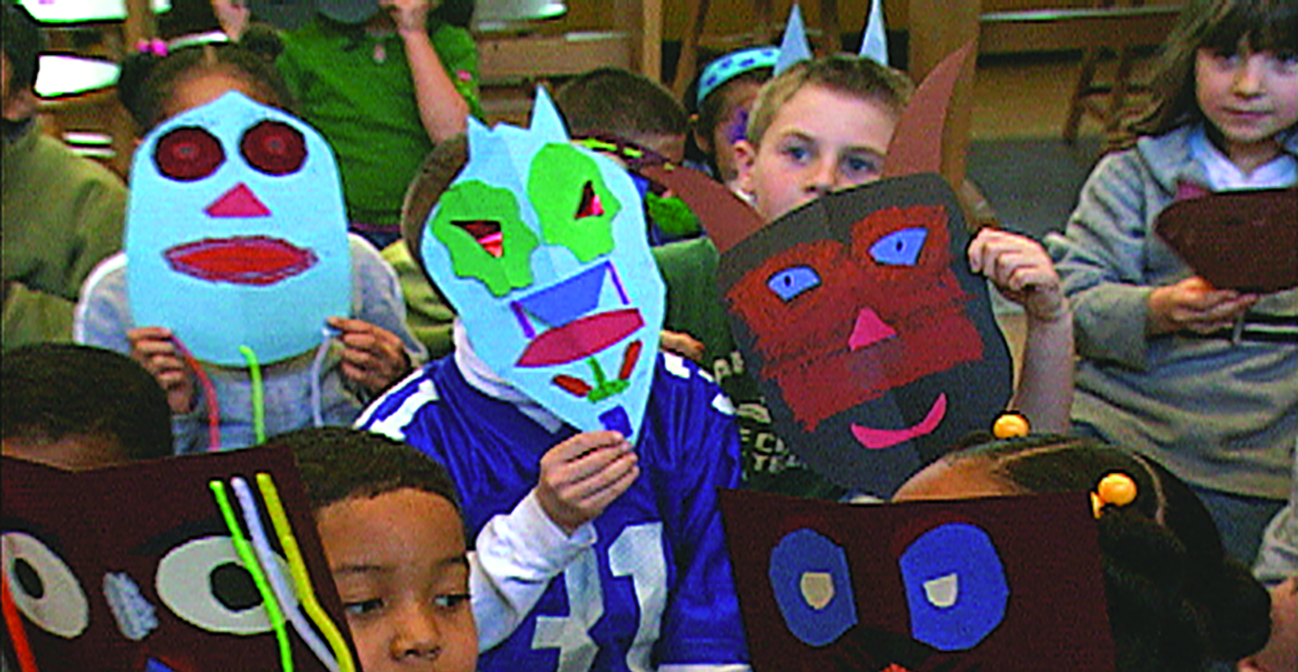Join us for conversations that inspire, recognize, and encourage innovation and best practices in the education profession.
Available on Apple Podcasts, Spotify, Google Podcasts, and more.

Every child has a right to expect an education rich in knowledge of the arts, as have students in societies dating back to ancient civilizations. We know that arts education provides avenues to crucial modes of thinking and learning. It helps students on many levels with all academic subjects as well as developing an understanding and appreciation of dance, music, theatre, and visual art. It is through exploration of works of art and through inquiry into the making of the arts that understanding of human experiences are gained and cultural values are transmitted.
— Southeast Center for Education in the Arts, the University of Tennessee at Chattanooga
Research clearly shows that integrating the arts in the instruction process enhances learning. As students explore the arts as subjects in themselves and relate them to other subjects in the curriculum, they draw on a fund of knowledge, cultural context, and sensory experience that is as ancient as human history, yet endlessly renewed.
Several models of arts education are practiced in U.S. schools:
Source: Vicki Rosenberg, Council of Michigan Foundations
For more perspectives on integrated arts curriculum, see The Arts in Every Classroomvideo library program What Is Arts Education?
Comprehensive arts education (also known as discipline-based arts education) is a conceptual approach, not a prescribed curriculum. It is taught as an essential component of general education and as a foundation for specialized arts study.
The goal of comprehensive arts education is to develop students’ abilities to understand and appreciate the arts by:
Curriculum is:
Full implementation of a comprehensive arts education program is marked by:
Blending teaching practices often thought of as separate, comprehensive arts education expects instruction in the arts — and in any art form — to:
For more information, see:
Arts specialists are teachers hired specifically to teach a particular art discipline (dance, music, theatre, or visual art).
In elementary schools with expanded arts education programs, the responsibilities and priorities of arts specialists expand:
Expanded arts programs also transform the role of the classroom teacher:
Arts specialists also are able to integrate non-arts subjects into their classes effectively. Collaboration of this type ensures that the arts no longer are isolated but become part of the total school curriculum.
For more perspectives on the roles of arts specialists and classroom teachers, see The Arts in Every Classroom video library programs:
Many critical factors work together throughout a school district to bring about an effective arts education program:
Source: Gaining the Arts Advantage: Lessons from School Districts That Value Arts Education,President’s Committee on the Arts and the Humanities and Arts Education Partnership, 1999
For more perspectives on teaching the arts in elementary schools, see The Arts in Every Classroom video library programs:
Critical Links: Learning in the Arts and Student Academic and Social Development
This 2002 report is a compendium of research in arts education with more than 40 summaries of studies in the disciplines of dance, drama, multi-arts, music, and visual arts, along with essays and perspectives by leading scholars. Published by the Arts Education Partnership, with funding from the National Endowment for the Arts and the U.S. Department of Education, Critical Links explores current practices in arts education, examines the effect of the various arts disciplines on students’ achievement and personal growth, and recommends future lines of research.
Champions of Change: The Impact of the Arts on Learning
This 1999 report compiles seven major studies that provide new evidence of enhanced learning and achievement when students are involved in a variety of arts experiences. Champions of Change was developed with the support of the GE Fund, the John D. and Catherine T. MacArthur Foundation, the Arts Education Partnership, and the President’s Committee on the Arts and the Humanities.
Gaining the Arts Advantage: Lessons From School Districts That Value Arts Education
The first national study to examine the generation and sustenance of strong arts education throughout entire school districts, this study:
Transforming Education Through the Arts Challenge (TETAC)
TETAC was a project of the National Arts Education Consortium, formed by six regional arts education institutes in California, Florida, Nebraska, Ohio, Tennessee, and Texas in 1996. Thirty-five partner schools in eight states engaged in a five-year project to place arts education at the core of the curriculum and assess resulting student achievement. TETAC consortium members explored, assessed, and documented ways in which intensive professional development, comprehensive arts education, and systemic school reform could transform schools and their extended communities.
TETAC was funded by the Walter H. Annenberg Foundation and the Getty Education Institute for the Arts. The project was completed in June 2001.